- Prominent macrophytic algae in freshwater and marine benthic systems with high diversity (1500 species)
- Annual and perennial forms, some up to 15 years old
- Cell walls contain three components: cellulose (structural support), alginic acid, sulfated polysaccharids
- Alginates are located in intercellular matrix and provide flexibility of the thallus and prevent desiccation
- Pigments: Chl. a, c, b-carotene, violaxanthin, fucoxanthin
- Storage product: laminaran, mannitol, glycerol
- Anti-freeze effect of mannitol and glycerol important for kelps in temperate and polar regions
- Cell division involves centrioles, which determine the plane of division; nucelar envelope remains intact until late division stage, when envelope disintegrates completely
- Plasmodesmata: plasma connections between adjacent cells, formed during cell division; cell-to-cell transport of photosynthetic producs and cell communication
- Thalli of brown algae may be filaments or complex tissues analogous to land plants
- Aggregated filaments produce thalli termed pseudoparenchymatous; true tissue thalli are called parenchymatous
- Parenchymatous thalli form by cell division in variuous planes; origin polyphyletic
- Diffuse growth: cell division throughout the thallus
- Meristem: localized regions of cell division
- Single apical cell: growth of a filament of one cell‘s width
- Apical meristem: several cells that divide in different directions, form mutlilayered thalli
- Intercalary meristem: found in large kelps between stipe and blade to increase length of thallus
- Surface meristem: thickens the thallus (blade)
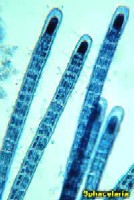
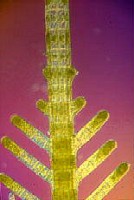
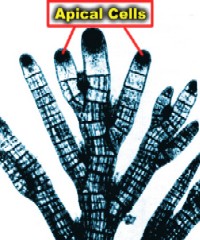
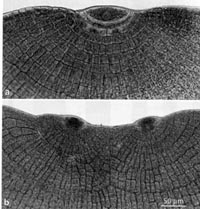
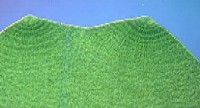
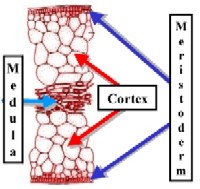
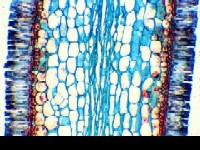
- Three types of reproductive cells: meiospores, asexual zoospores, gametes with typical ochrophyte structure and eye-spot
- Flagella origin at the side of the cells rather apically
- Gametes can be isogamous, anisogamous, oogamous
- Isogamous gametes: one type of gametes settles very soon onto substrate, the other type (male) remains swimming longer
- Pheromons are produced by female gametes to attrackt male gametes
- Gametophytes produce gametes in plurilocular gametangia
- Plurilocula gametangia („sporangia“) sometimes also produce asexual zoospores, which into thalli similar to parent thalli
- Unfused gametes sometimes can also develop into a thallus (parthenogenesis); result in female and male thalli at a rate of 19:1
- Unilocular sporangia only occur on sporophytes
- Life Cycle of Ectocarpus: Sporophyte and gemetophyte appear morphologically similar; only the sporophyte carries both pluri- and unilocular sporangia, the gametophyte carries only plurilocular gametangia
- Life Cycle of Laminaria: sporophye is prominent sea kelp, but gametophyte is microscopically small; unilocular sporangia occur on the surface of the sporophyte's blade
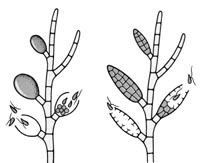 unilocular
(left); plurilocular (right)
unilocular
(left); plurilocular (right)
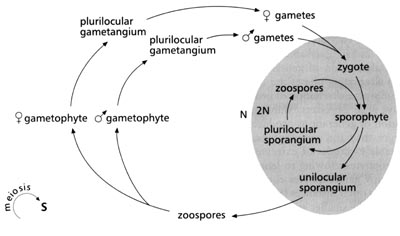
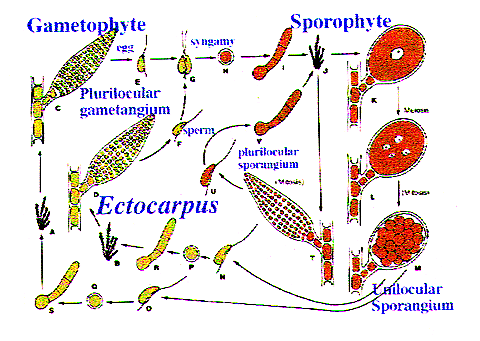
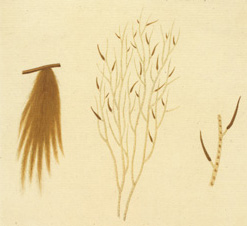
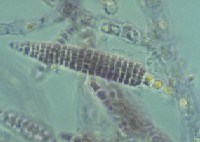
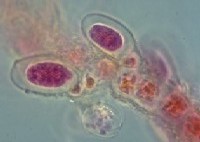

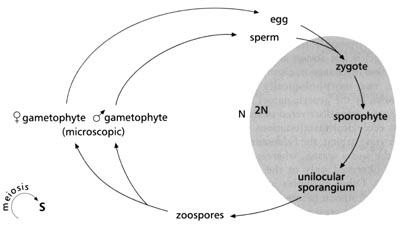
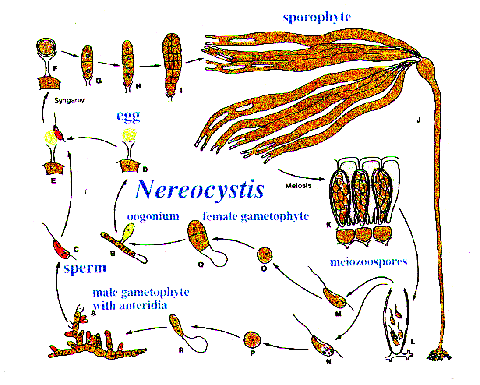
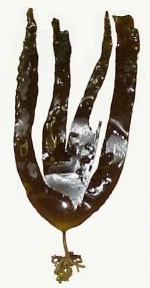
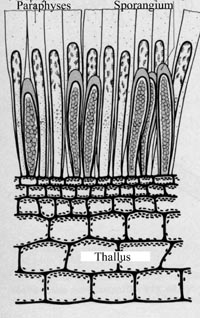
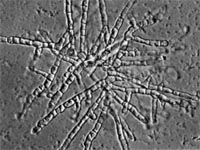
Sporophyte; unilocular sporangia on sporophyte; gametophyte
-
Life
Cycle of Fucus: A gametophyte is lacking; the sporophyte produces
gametangia in conceptacles on its blades, which release eggs and sperms;
the zygote develops into a new sporophyte. No asexual reproduction in Fucus.
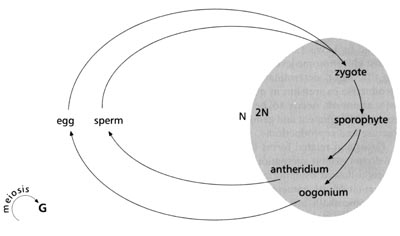
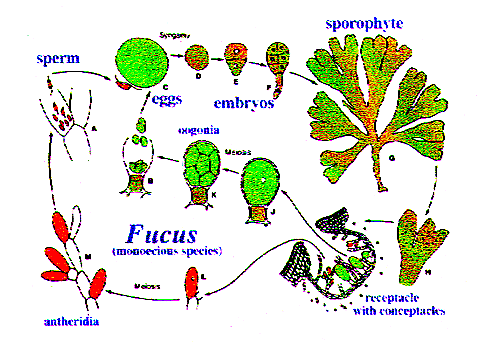
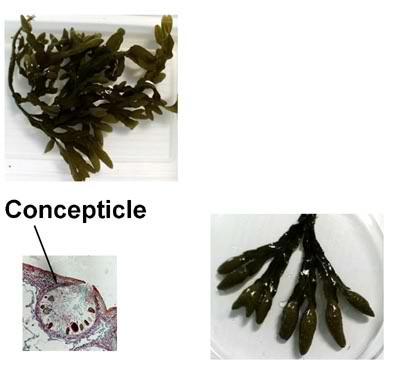

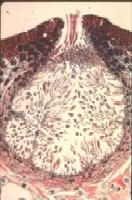
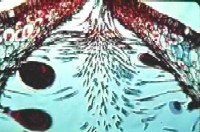
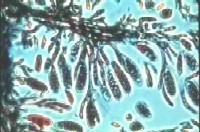
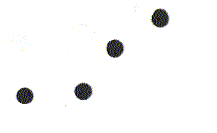 Development
of Fucus zygotes
Development
of Fucus zygotes
- Kelp forrests on the Pacific coast (California)
- Pneumatocysts provide bouyancy; up to 10% carbon monoxide
- Meristoderm: pigmented, photosynthetic cells
- Cortex: colorless cells
- Sieve elements: elongated cells with perforated end walls, forming transportation ducts through the thallus at rates of 50 cm per day
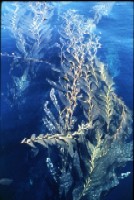
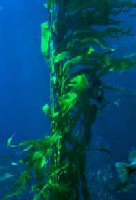
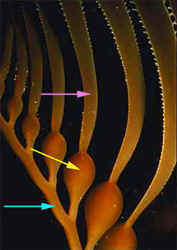
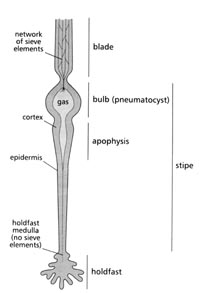
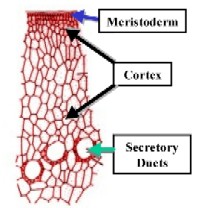
 Sieve
cell
Sieve
cell